Carbohydrate Counting
Eating consistent amounts of carbohydrates every day helps you balance your blood glucose level.
Carbohydrate counting is a way of controlling your diabetes.
You can also control your diabetes with insulin or pills, no doubt, but if you still haven't reached that point, you better start counting your carbohydrates.
But how can carbohydrate counting affect our diabetes control?
You can achieve a good control of your diabetes by balancing your blood glucose levels.
Carbohydrate naturally increases your blood sugar level. Eating large amounts of carbohydrates at one time can raise your blood sugar to a high level.
That's the reason why you have to learn the technique of carbohydrate counting by calculating the sum of the carbohydrates in each meal of yours.
We can find carbohydrates in starches (breads, cereals, starchy vegetables, and beans), fruit, milk and sweets.
Protein and fat are other nutrients that are found in foods, but these nutrients do not have the same effect as carbohydrates on your blood sugar. To keep track of your blood sugar levels, you should test your blood sugar regularly.
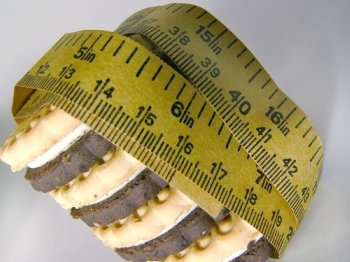
You can start your carbohydrate counting with your dietitian or diabetes educator who will help you develop a healthy meal plan that works best for you.
Your dietitian or diabetes educator will tell you how much carbohydrates you should eat or drink during each meal and snack.
Your meal plan will be based on several types of information.
This information may include your age, weight, usual food intake, physical activity level, blood sugar levels, and diabetes medicine.
Once you know how much carbohydrates you should eat, you can decide what type of carbohydrate you want to eat.
How do I count carbohydrates?
Well, there are two ways of carbohydrate counting.
For example, if your dietitian or diabetes educator estimates that you need 75 grams of carbohydrates in your breakfast each day, then this can be one option for your breakfast:
1 slice wheat bread toast - 15 gr.
1 teaspoon margarine
3/4 cup cornflakes - 18 gr.
1 small banana - 15 gr.
1/2 cup orange juice - 15 gr.
1 cup black coffee
1 cup low fat milk - 12 gr.
Total carbs - 75 gr.
You will need to work with your dietitian or diabetes educator to determine your ratio of carbohydrate to insulin.
Below you have a chart of the common foods with their typical serving sizes and their carbohydrate amounts in grams.
FOOD CHART FOR CARBOHYDRATE COUNTING
VEGETABLES

| NAME | SERVING SIZE | CARBS (gr.) |
|---|---|---|
| Argula | 1/2 cup | 17.7 |
| Artichoke | 1 medium | 13 |
| Asparagus | 4 spears | 2.1 |
| Beans, Green, Fresh | 1/2 cup | 4.9 |
| Beans, Green, Canned | 1/2 cup | 5.1 |
| Beans, Black, Canned | 1/2 cup | 17 |
| Beans, Kidney, Canned | 1/2 cup | 19 |
| Beans, White, Canned | 1/2 cup | 19 |
| Beans, Lima, Cooked/Boiled | 1/2 cup | 20.1 |
| Beans, Navy, Cooked | 1/2 cup | 24 |
| Beets | 1/2 cup | 6.8 |
| Broccoli | 1/2 cup | 2.3 |
| Cabbage | 1/2 cup | 1.9 |
| Carrots | 1 medium | 6 |
| Celery | 1 medium stalk | 1 |
| Corn | 1 cup | 29.3 |
| Lettuce | 1 head | 0.4 |
| Mushrooms | 1/2 cup | 4 |
| Onions | 1 medium | 9 |
| Peas, Green | 1/2 cup | 10 |
| Potato, Baked | 1 medium | 36.7 |
| Potato, Sweet, Baked | 1 medium | 31.6 |
| Pumpkin | 1/2 cup | 10.1 |
| Peppers, Red | 7 ounce Jar | 4 |
| Tomato | 1 medium | 6 |
FRUIT

| NAME | SERVING SIZE | CARBS (gr.) |
|---|---|---|
| Apple, Raw | 1 medium | 21.1 |
| Apricot | 3 medium | 11.8 |
| Banana | 1 medium | 26.7 |
| Cantaloupe | 1/2 medium | 22.3 |
| Cherries | 1/2 cup | 12 |
| Dates | 1 date | 6 |
| Grapefruit | 1/2 medium | 16 |
| Grapes | 1 cup | 15.8 |
| Kiwi | 1 medium | 11.3 |
| Lemon | 1 medium | 5.4 |
| Mango | 1 medium | 35.2 |
| Orange, Raw | 1 medium | 15.4 |
| Papaya | 1 medium | 29.8 |
| Peach | 1 medium | 9.7 |
| Pear | 1 medium | 25.1 |
| Pineapple | 1 slice - 3/4" thick | 10.4 |
| Plum | 1 ounce | 3.7 |
| Prunes | 10 each | 52.7 |
| Raisins | 1/2 cup | 57.5 |
| Watermelon | 1/2 cup | 5.7 |
PASTA
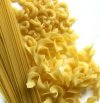
| NAME | SERVING SIZE | CARBS (gr.) |
|---|---|---|
| Spaghetti | 2 ounce dry | 42.6 |
| Ravioli (meat) | 2 ounce dry | 42.6 |
| Fettuccini (egg) | 2 ounce dry | 42.6 |
| Spiral Pasta | 2 ounce dry | 42.6 |
| Capellini | 2 ounce dry | 42.6 |
| Linguine | 2 ounce dry | 42.6 |
| Macaroni | 2 ounce dry | 42.6 |
| Rice Vermicelli | 1 cup | 79.4 |
BREADS, CAKES, CEREALS & MUFFINS
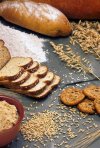
| NAME | SERVING SIZE | CARBS (gr.) |
|---|---|---|
| Biscuit, Chocolate | 20 gr. | 16 |
| Bran, Wheat | 8 gr. | 2.5 |
| Bread, All types | 1 slice | 15 |
| Bagel | 1 bagel | 71 |
| Blueberry Muffin | 1 muffin | 27 |
| Cake, Fruit | 60 gr. | 35 |
| Cake, Sponge | 60 gr. | 32 |
| Doughnut | 40 gr. | 20 |
| Graham Crackers | 2 crackers | 24 |
| Kellogg's Cornflakes | 1 cup | 24 |
| Melba Toast | 1 round | 3 |
| Scone | 30 gr. | 18 |
| Pancake | 75 gr. | 27 |
| Pita Bread | 1 pita – 6.5" | 28 |
| Pizza, Cheese & Tomato | 150 gr. | 38 |
| Rye Crispbread | 1 each | 0 |
| Wheat Biscuit | 35 gr. | 25 |
| Whole Wheat Bread | 1 slice | 13 |
| Eggroll Wrapper | 1 eggroll | 4.5 |
GRAINS
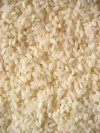
| NAME | SERVING SIZE | CARBS (gr.) |
|---|---|---|
| Barley | 1 cup | 135 |
| Bulgur | 1 cup cooked | 33.8 |
| Couscous | 1 cup cooked | 41.6 |
| Cornmeal | 68 | 28 |
| Millet | 71 | 28 |
| Noodles (instant) | 1 cup | 25.9 |
| Rice, Wild | 1 cup cooked | 35 |
| Rice, Brown | 1 cup cooked | 44.8 |
| Rice, White, Long Grain | 1 cup cooked | 35.1 |
DAIRY
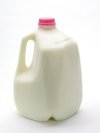
| NAME | SERVING SIZE | CARBS (gr.) |
|---|---|---|
| Cheese, Cottage, Regular | 1/2 cup | 4 |
| Cheese, Cream, Regular | 1 ounce | 0.8 |
| Cheese, Feta | 1 ounce | 1.2 |
| Cheese, Mozzarella, Skim | 1 ounce | 0.8 |
| Cheese, Parmesan | 1 ounce | 0.9 |
| Cheese, Swiss | 1 ounce | 1 |
| Milk (whole) | 1 cup | 11.4 |
| Milk (skimmed) | 1 cup | 11.9 |
| Milk (chocolate flavored) | 1 cup | 26 |
| Ice Cream (whole) | 60 gr. | 15 |
| Ice cream (low-fat) | 60 gr. | 15 |
| Yogurt (low-fat) | 1 cup | 16 |
| Soy milk banana | 1 cup | 4.3 |
| Soy beverage chocolate | 1 cup | 4.3 |
| Tofu , Raw | 1/2 cup | 2.3 |
SNACKS
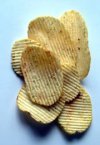
| NAME | SERVING SIZE | CARBS (gr.) |
|---|---|---|
| Almonds | 1 cup | 20 |
| Cashews | 1 cup | 45 |
| Chocolate Bar | 1 ounce | 17 |
| Caramel | 50 gr. | 39 |
| Jelly Beans | 100 gr. | 90 |
| Peanuts | 1 ounce | 5 |
| Popcorn (no oil) | 1 ounce | 20 |
| Pistachios | 1 cup | 32 |
| Tahini | 1 tbsp | 4 |
| Walnuts | 1 cup | 19 |
SUGARS
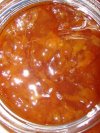
| NAME | SERVING SIZE | CARBS (gr.) |
|---|---|---|
| Corn Syrup, Light | 2 tbsp | 0 |
| Honey | 1 tbsp | 16 |
| Jam | 100 gr. | 69 |
| Peanut Butter | 100 gr. | 13 |
| Marmalade | 100 gr. | 70 |
| Maple Syrup | 2 tbsp | 0 |
| Sugar | 100 gr. | 100 |
BEVERAGES

| NAME | SERVING SIZE | CARBS (gr.) |
|---|---|---|
| Apple Juice, Raw | 6 ounce | 21.7 |
| Beer | 12 Oz can | 12 |
| Cola | 100 gr. | 11 |
| Grapefruit Juice, Raw | 6 ounce | 17 |
| Orange Soft Drink | 6 ounce | 18.4 |
| Orange Juice, Raw | 1/2 cup | 13 |
| Lemon Juice, Raw | 1/2 cup | 10.5 |
| Pineapple Soft Drink | 6 ounce | 25.8 |
| Wine | 1 glass (4 ounce) | 1.7 |
|
Return from Carbohydrate Counting to Diabetes Concepts |